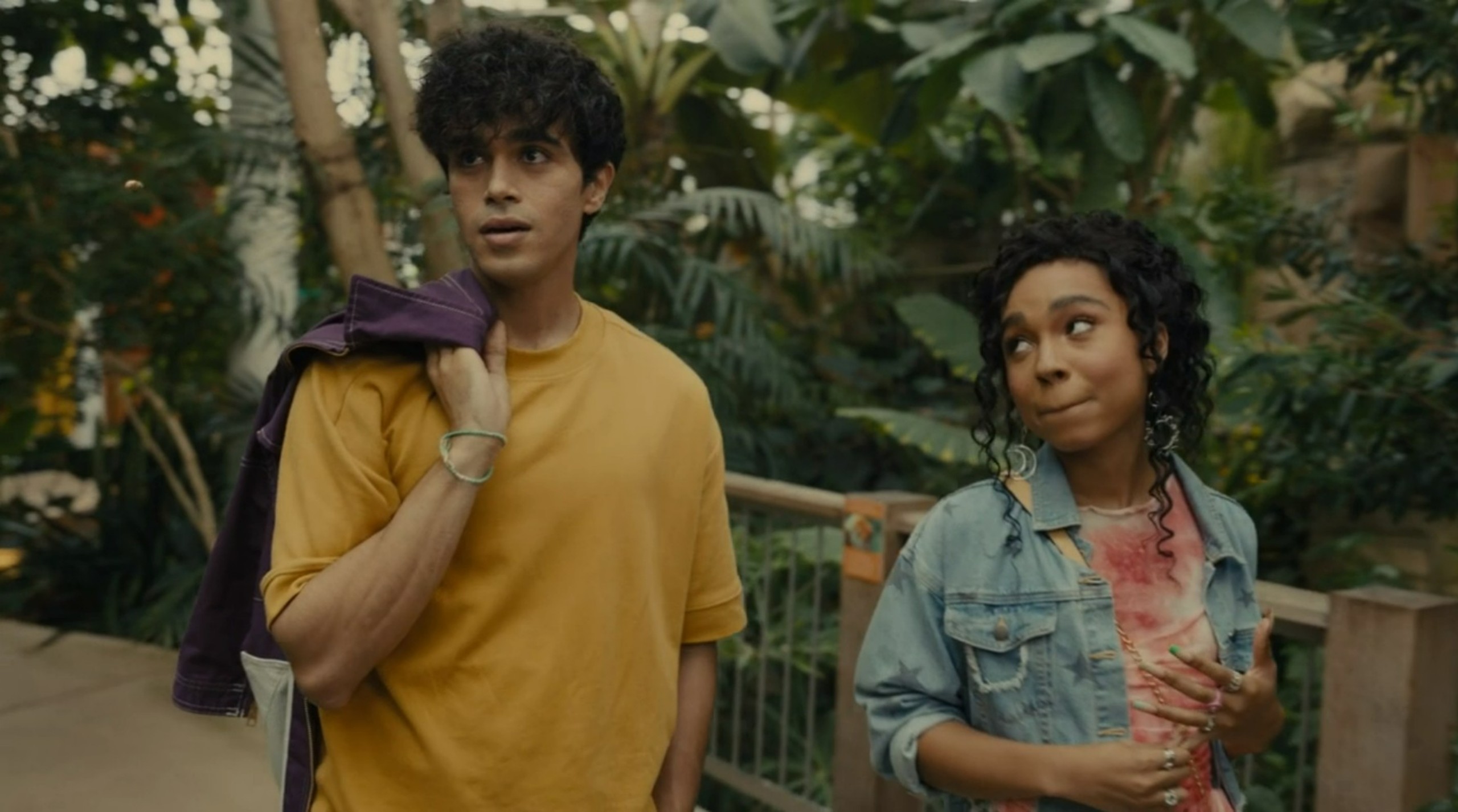Love, Simon was a breakthrough for the LGBT community. It proved that studio backed LGBT teen romcoms could make money (it was profitable), and there was an audience for this new type of story. Billy Porter, never shy about anything, saw his time to Pose (Zing!) behind the camera instead of in front of it. Hey, when you make money and have talent, Anything’s Possible when it comes to storytelling right?
This LGBT story focuses on the T. Kelsa (Eva Reign) has completed her gender transformation, and is ready to tackle senior year of high school with her best friends Em (Courtnee Carter) and Chris (Kelly Lamor Wilson). In her art class, Kelsa starts developing a crush on the shy but nice Khal (Abubakr Ali), who’s been crushing on Kelsa for a while. However, both have reservations about romancing: Kelsa finds out Em also thirsts for Khal, and Khal’s friend Otis (Grant Reynolds) is behind the times and openly disdains Kelsa’s presence. A bouquet of flowers later, and Kelsa and Khal find themselves in a whirlwind of drama, excitement, and heartbreak. You know, high school.
For as extraordinary and Billy Porter can be, his biggest feat in Anything’s Possible is, well, how ordinary the story feels. Kelsa is destined to be a Trans hero: confident in her choices, and honest enough to do a semi-private vlog of her thoughts and feelings to help her cope with her new life since she is well past her surgery, but in a positive way. For most of the movie Porter makes you completely forget Kelsa is trans, as she goes about and gets into all sorts of high school drama with Khal. Their courtship is the highlight of the movie: it’s adorable and awkward in the best ways, finding all the right notes as they start to fall in love. And the high school drama is just a remix of stuff we’ve seen before: there’s jilted friends, secrets, adorable date nights (Props to the Phipps Conservatory, you get a lot of shine!), drunk parties. This opening section of Anything’s Possible is not only the gateway for non-trans audiences, it’s also a reminder that “trans” isn’t THE only identity trait, and that once you get past that one characteristic most trans people are people first, meaning they experience most of the same fears, hopes, desires, as anyone else.
But the rub comes when conflict comes into play. Bigots are going to be bigots; they’re easy to dismiss. However, Billy Porter’s movie shows how complicated modern high school has become to navigate. Once we’ll say mostly well intentioned people start fighting with trans people for valid reasons, raw emotional arguments start to surface, and the conflict inevitably pushes the “trans issue” to the front of the line to be discussed, immediately emotionally charging every argument in an escalating fashion. Clever prejudice starts to show up as well, using backwards laws against a trans person and wiping your hands, claiming “rules are rules.” Or, especially in high school, the “woke” kids might overly come to the defense of a trans person, hijacking whatever statement the trans person is trying to make for their popularity gain. As a result, people like Kelsa get lost in the shuffle, forced into a crisis of confidence and struggle to find their voice again. When Kelsa goes adrift the movie does too a bit, eventually quickly righting the ship back to its romcom fantasy, but Anything’s Possible is a warning sign about the slippery slope of conflict resolution transforming into emotional prejudice and cruelty.
But in the end, love wins. Love from good people, love for a significant other, and most importantly, love for oneself in Anything’s Possible. Billy Porter and Eva reign show that even an ordinary life of a trans high school student can be extraordinary, as long as they have a chance to be their true selves. And visit the Phipps Conservatory. The Pittsburgh Tourism Agency sure got their money’s worth with Anything’s Possible: I don’t think the city ever looked more romantic.

